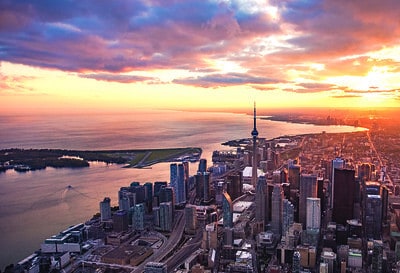The video shot in the summer of 2016 is grisly.
In it, Mark Mattson, co-founder of the Lake Ontario Waterkeeper, displays materials skimmed from the Toronto harbor, which lies along the northwestern end of Lake Ontario.
As his small boat bobs in the water, he lays them on a wooden oar: slimy condoms, tampons and wet naps.
And he points to a likely culprit: the millions of gallons of raw sewage that are dumped into the harbor and Lake Ontario after big rainstorms.
The problem results from the way infrastructure in Toronto — and hundreds of other cities along the Great Lakes — was built decades ago. In older cities, a single system of pipes may transport sewage as well as stormwater runoff.
That system is sufficient on most days. Treatment plants can remove contaminants before discharging the water into the harbor or its tributaries.
But a big storm can overwhelm a treatment plant’s capacity. When that happens, water rushing through those pipes bypasses the plant and ends up, untreated, in the lake.
It’s unsightly — and unhealthy. […]
Full article: Single Systems: Great Lakes cities’ sewer designs mean waste in the waters


